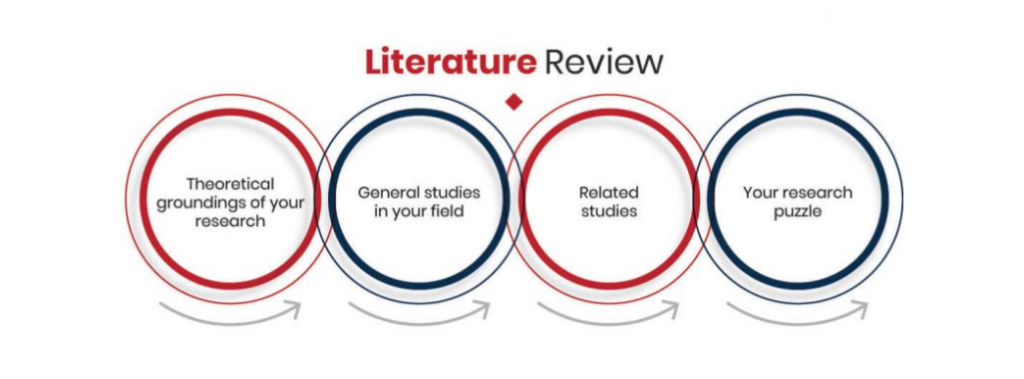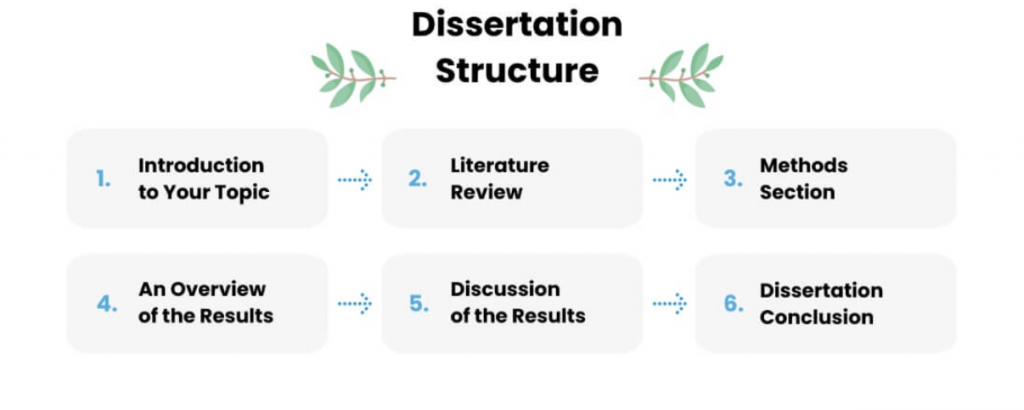The mere mention of the word ‘dissertation’ can evoke a complex mix of ambition, anxiety, and sheer determination in postgraduate students. Representing the culmination of years of study, research, and critical thinking, the dissertation is arguably the most significant academic undertaking for many scholars. It’s a marathon, not a sprint, and like any marathon, success often lies in understanding the course – in this case, the structure and requirements of the document itself. Breaking down this monumental task into its manageable parts is crucial.
This article serves as a comprehensive guide to the essential dissertation components, aiming to demystify the process and provide a clear roadmap for aspiring researchers.
Understanding the purpose and requirements of each section can transform the daunting prospect of writing a dissertation into a structured, achievable project. While specific requirements may vary slightly between institutions and disciplines, the core dissertation components remain largely consistent. Mastering these elements is fundamental to producing a high-quality, coherent, and academically rigorous piece of work.
Setting the Stage: Preliminary Pages
Before diving into the core research, several preliminary pages set the context and provide essential navigational information. These might seem like formalities, but their accuracy and presentation are vital first impressions.
- Title Page: This is the official entry point. It typically includes the full dissertation title, the author's name, the degree for which the dissertation is submitted (e.g., Doctor of Philosophy, Master of Arts), the department and university, and the date of submission. The title itself should be concise, informative, and accurately reflect the research scope.
- Abstract: Often written last but placed near the beginning, the abstract is a concise summary (usually 150-350 words) of the entire dissertation. It should briefly state the research problem or question, the methodology employed, the key findings, and the main conclusions or contributions. It's a critical standalone piece, allowing readers to quickly grasp the essence of the research. Think of it as the executive summary – a vital snapshot among the dissertation components.
- Acknowledgements (Optional but Recommended): This section allows the author to express gratitude to individuals and institutions who supported the research journey. This can include supervisors, committee members, funding bodies, research participants, colleagues, friends, and family. While personal, it should maintain a professional tone.
- Table of Contents (TOC): The TOC provides a roadmap for the reader, listing all major sections (chapters, main headings, subheadings) and their corresponding page numbers. Accuracy is paramount. Most word processing software can generate this automatically, which is highly recommended to ensure consistency.
- List of Tables and List of Figures: If the dissertation includes numerous tables or figures, separate lists detailing their titles and page numbers should follow the TOC. This aids navigation for readers looking for specific data visualizations or summaries. These lists are important organizational dissertation components.
The Heart of the Matter: Core Dissertation Components
These chapters form the intellectual core of the dissertation, presenting the research narrative from inception to conclusion. Each chapter serves a distinct purpose, building upon the previous one to create a cohesive argument.
1. Introduction Chapter:
This chapter sets the stage for the entire dissertation. Its primary goal is to introduce the research topic, establish its significance, and outline the research problem or questions. Key elements typically include:
- Background and Context: Providing the necessary backdrop for the reader to understand the research area.
- Problem Statement: Clearly articulating the specific issue, gap in knowledge, or phenomenon the research addresses.
- Research Questions and/or Hypotheses: Stating the specific questions the research aims to answer or the hypotheses it intends to test.
- Aims and Objectives: Defining the overall goal of the research and the specific, measurable steps taken to achieve it.
- Significance/Rationale: Justifying why the research is important – academically, practically, or socially. What contribution does it make?
- Scope and Limitations: Defining the boundaries of the research (what it covers and what it doesn't) and acknowledging any inherent limitations.
- Dissertation Structure Outline: Briefly describing the content and purpose of each subsequent chapter.
The introduction is arguably one of the most crucial dissertation components as it must capture the reader's interest and clearly define the research territory.
2. Literature Review Chapter:
This chapter demonstrates the author's comprehensive understanding of the existing scholarly landscape relevant to their topic. It's not merely a summary of previous studies but a critical synthesis and analysis. Key functions include:
- Situating the Research: Placing the current study within the broader field of knowledge.
- Identifying Key Themes and Debates: Discussing major concepts, theories, and ongoing scholarly conversations.
- Critiquing Existing Literature: Evaluating the strengths and weaknesses of previous research, methodologies, and findings.
- Identifying the Gap: Explicitly showing how the current research addresses a gap, inconsistency, or unresolved question identified in the literature.
- Building the Theoretical Framework: Often, the literature review helps establish or refine the theoretical lens through which the research problem is viewed.

A thorough literature review underpins the entire study, justifying the research questions and methodology. It's a demanding but essential part of the dissertation components.
3. Methodology Chapter:
This chapter provides a detailed account of how the research was conducted. Transparency and rigor are key here, allowing readers to assess the validity and reliability of the study and potentially replicate it. Essential elements include:
- Research Philosophy/Paradigm: Discussing the underlying philosophical assumptions (e.g., positivism, interpretivism, pragmatism) guiding the research.
- Research Design: Explaining the overall strategy (e.g., experimental, survey, case study, ethnographic, grounded theory).
- Research Approach: Specifying whether the approach is primarily quantitative, qualitative, or mixed-methods.
- Data Collection Methods: Describing the specific tools and procedures used to gather data (e.g., surveys, interviews, observations, experiments, archival research). Details about instrument design, participant recruitment, and sampling strategy are crucial.
- Data Analysis Techniques: Outlining the methods used to analyze the collected data (e.g., statistical tests, thematic analysis, discourse analysis).
- Ethical Considerations: Detailing the steps taken to ensure ethical conduct, such as informed consent, confidentiality, and data protection.
- Limitations of the Methodology: Acknowledging any weaknesses or constraints related to the chosen methods.
The methodology chapter is the technical blueprint of the research, a critical component among the dissertation components.
4. Findings/Results Chapter:
This chapter presents the outcomes of the research in a clear, objective, and organized manner. The focus is on reporting what was found, without extensive interpretation (which typically follows in the discussion chapter).
- For Quantitative Studies: This usually involves presenting statistical data through tables, graphs, and charts, accompanied by descriptive text highlighting key results in relation to the research questions or hypotheses.
- For Qualitative Studies: This often involves presenting key themes, patterns, or categories emerging from the data, supported by illustrative quotes or excerpts from interviews, observations, or documents.
Clarity and accuracy are paramount. The presentation should directly address the research questions outlined earlier. This factual reporting is a cornerstone of the dissertation components.
5. Discussion Chapter:
This is where the author interprets the findings presented in the previous chapter, drawing connections and exploring implications. It moves beyond simply reporting results to analyzing their meaning. Key tasks include:
- Interpreting the Findings: Explaining what the results mean in the context of the research questions.
- Relating Findings to Literature: Discussing how the results support, contradict, or extend existing knowledge identified in the literature review.
- Addressing Research Questions/Hypotheses: Explicitly stating whether the research questions were answered or the hypotheses supported.
- Discussing Implications: Exploring the theoretical, practical, or policy implications of the findings. What are the broader consequences?
- Acknowledging Limitations: Providing a more in-depth discussion of the study's limitations and their potential impact on the findings.
- Suggesting Future Research: Recommending avenues for future investigation based on the study's results and limitations.
The discussion chapter showcases the author's analytical skills and ability to engage critically with their results, making it one of the most significant intellectual dissertation components.
6. Conclusion Chapter:
The conclusion provides a concise synthesis of the entire dissertation, bringing the research journey to a close. It should not introduce new information but rather summarize and reiterate the key aspects of the study.
- Summary of Key Findings: Briefly restating the main results.
- Answering the Research Question(s): Providing a final, clear answer based on the evidence presented.
- Contribution to Knowledge: Reasserting the study's main contributions to the field.
- Overall Significance: A final statement on the importance and impact of the research.
- Concluding Thoughts/Final Reflections: Offering brief final remarks on the research process or its outcomes.
This chapter neatly ties together all preceding dissertation components, leaving the reader with a clear understanding of the study's value and outcomes.

The Supporting Structure: Back Matter
Following the main chapters, the back matter provides essential supporting information and supplementary materials.
- References/Bibliography: This section lists all the sources cited within the dissertation. Accuracy and consistency in citation style (e.g., APA, MLA, Chicago, Harvard) are absolutely critical. A bibliography might also include relevant works consulted but not directly cited. Meticulous referencing is a non-negotiable academic standard and a vital technical element among the dissertation components.
- Appendices (Optional): Appendices contain supplementary material that is relevant but too detailed or cumbersome to include in the main body. Examples include raw data summaries, survey instruments, interview protocols, detailed calculations, participant information sheets, or consent forms. Each appendix should be clearly labeled.
Overarching Considerations Across All Dissertation Components
Beyond the individual sections, several factors are crucial for the dissertation as a whole:
- Cohesion and Flow: Ensure logical transitions between chapters and sections. The dissertation should read as a unified whole, not a collection of disparate parts. Each of the dissertation components must connect seamlessly.
- Academic Tone and Style: Maintain a formal, objective, and scholarly tone throughout. Language should be precise and unambiguous.
- Formatting and Presentation: Strictly adhere to the university's specific formatting guidelines regarding margins, font size, spacing, headings, pagination, and citation style. Consistency is key.
- Originality and Academic Integrity: Ensure all work is original and properly cited to avoid plagiarism. This is fundamental to academic research.
- Proofreading and Editing: Thoroughly proofread and edit the entire manuscript multiple times to eliminate errors in grammar, spelling, punctuation, and formatting. Fresh eyes (a colleague, supervisor, or professional editor) can be invaluable.
Embarking on a dissertation is a significant challenge, and navigating its complexities requires careful planning and understanding. Students may sometimes feel overwhelmed by the scale of the task. In such situations, seeking help with a dissertation from supervisors, mentors, university writing centres, or peer support groups is highly encouraged. While some students explore options like professional dissertation writing services for editing or formatting assistance, it's crucial to remember that the core intellectual work, research, and writing must remain the student's own authentic contribution.
At Exemplary Dissertations, we provide customized dissertation help that covers topic suggestion, paper writing, proofreading, editing, formatting and plagiarism removal. Besides, we can also assist you with crafting research papers, essays, term papers, case studies and thesis for academic excellence.
Conclusion
Ultimately, mastering the essential dissertation components is about understanding the narrative structure of academic research. Each section plays a vital role in building a compelling, rigorous, and credible argument. By breaking the process down, focusing on the purpose of each component, and dedicating sufficient time and effort to each stage, students can successfully navigate the dissertation journey and produce a piece of scholarship that makes a meaningful contribution to their field. A thorough understanding and meticulous execution of each of these dissertation components paves the way for a successful submission and the achievement of a hard-earned postgraduate degree. Remembering the distinct function of all dissertation components provides the framework needed for success.